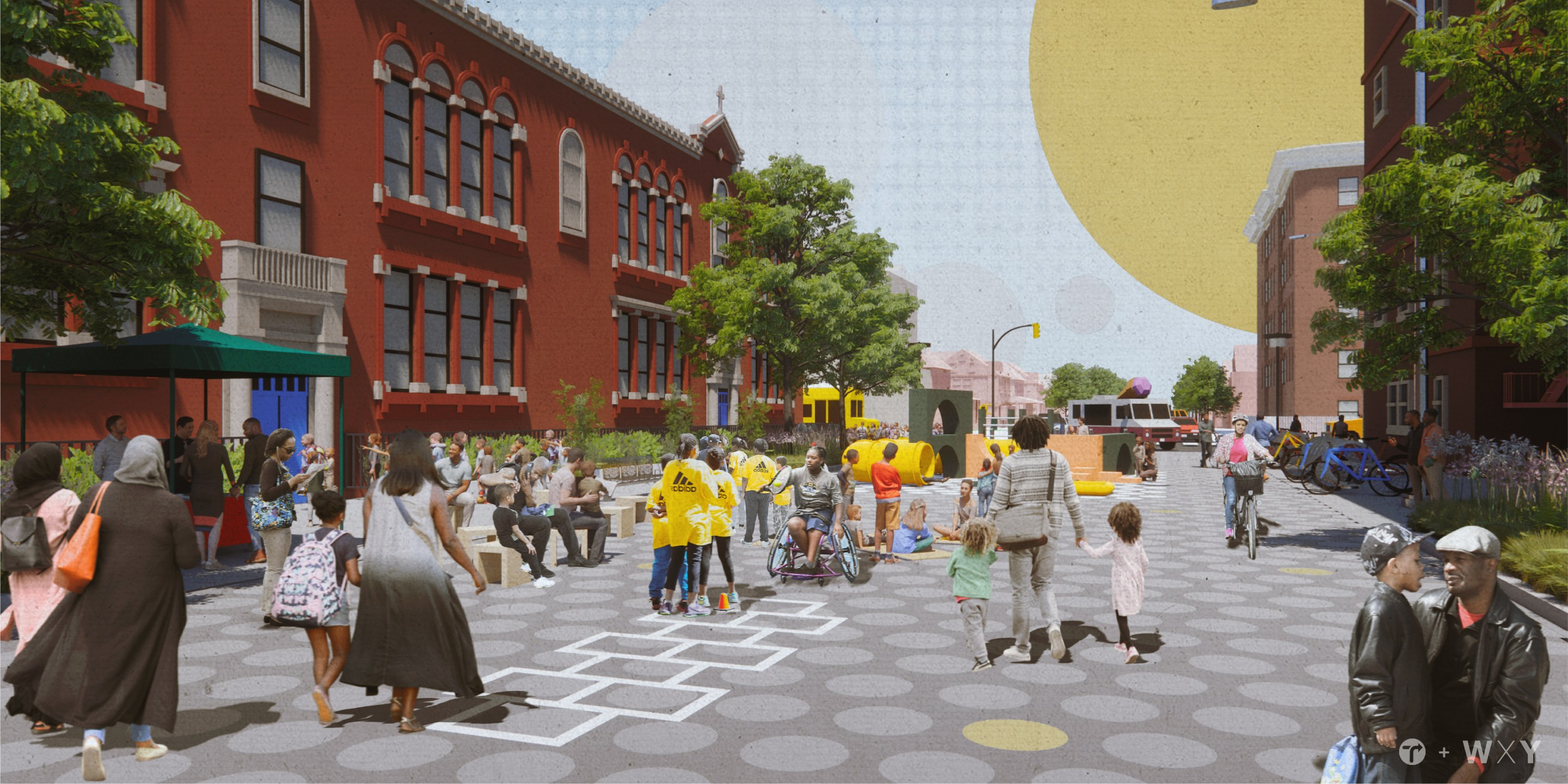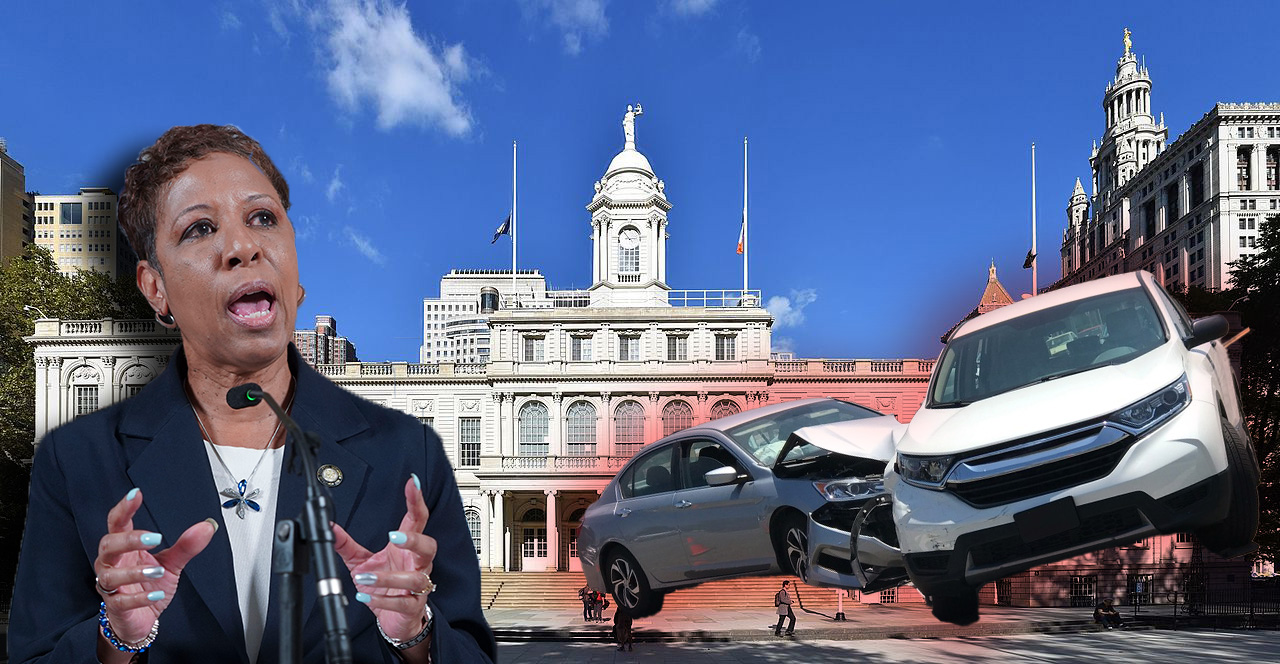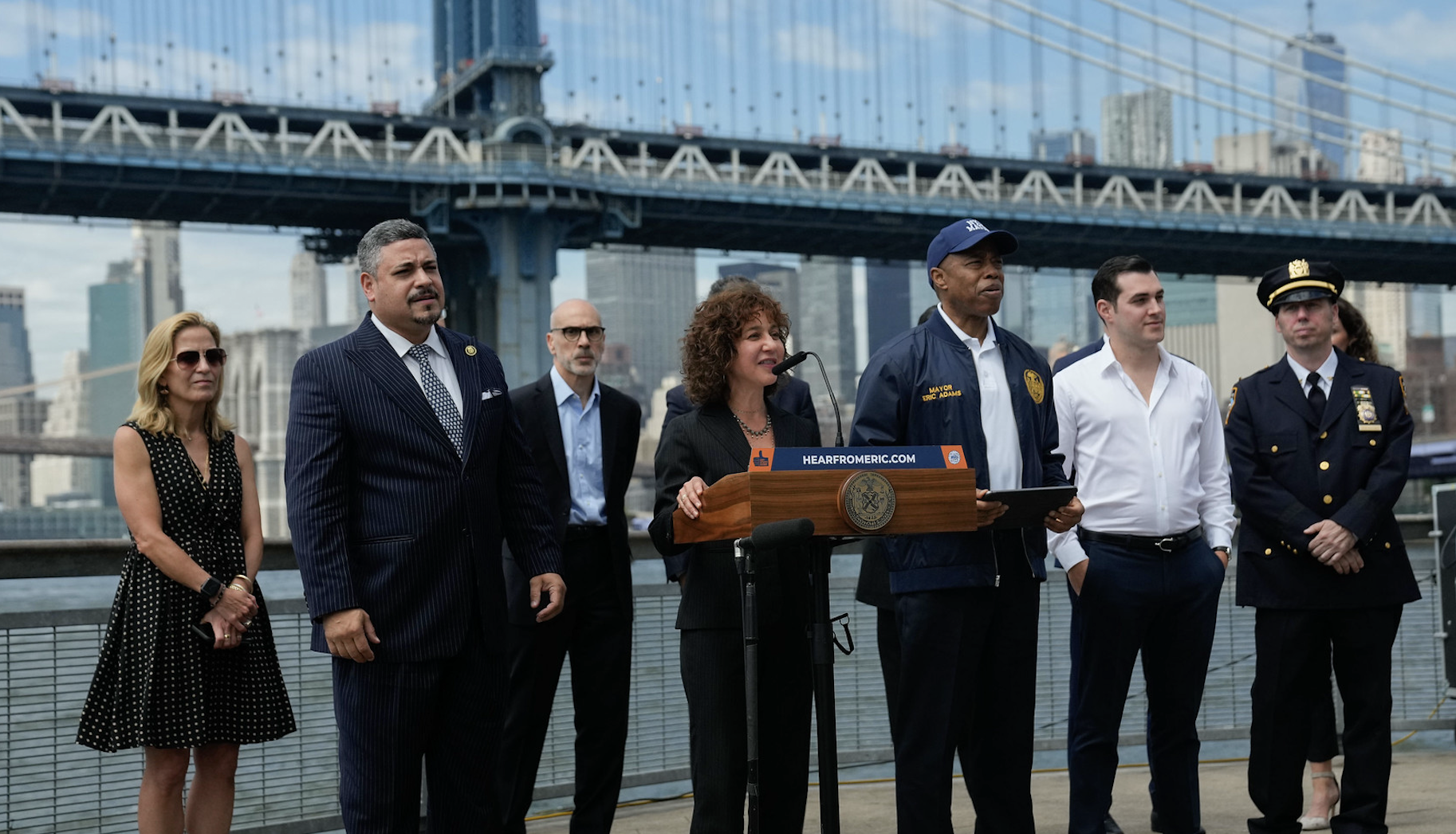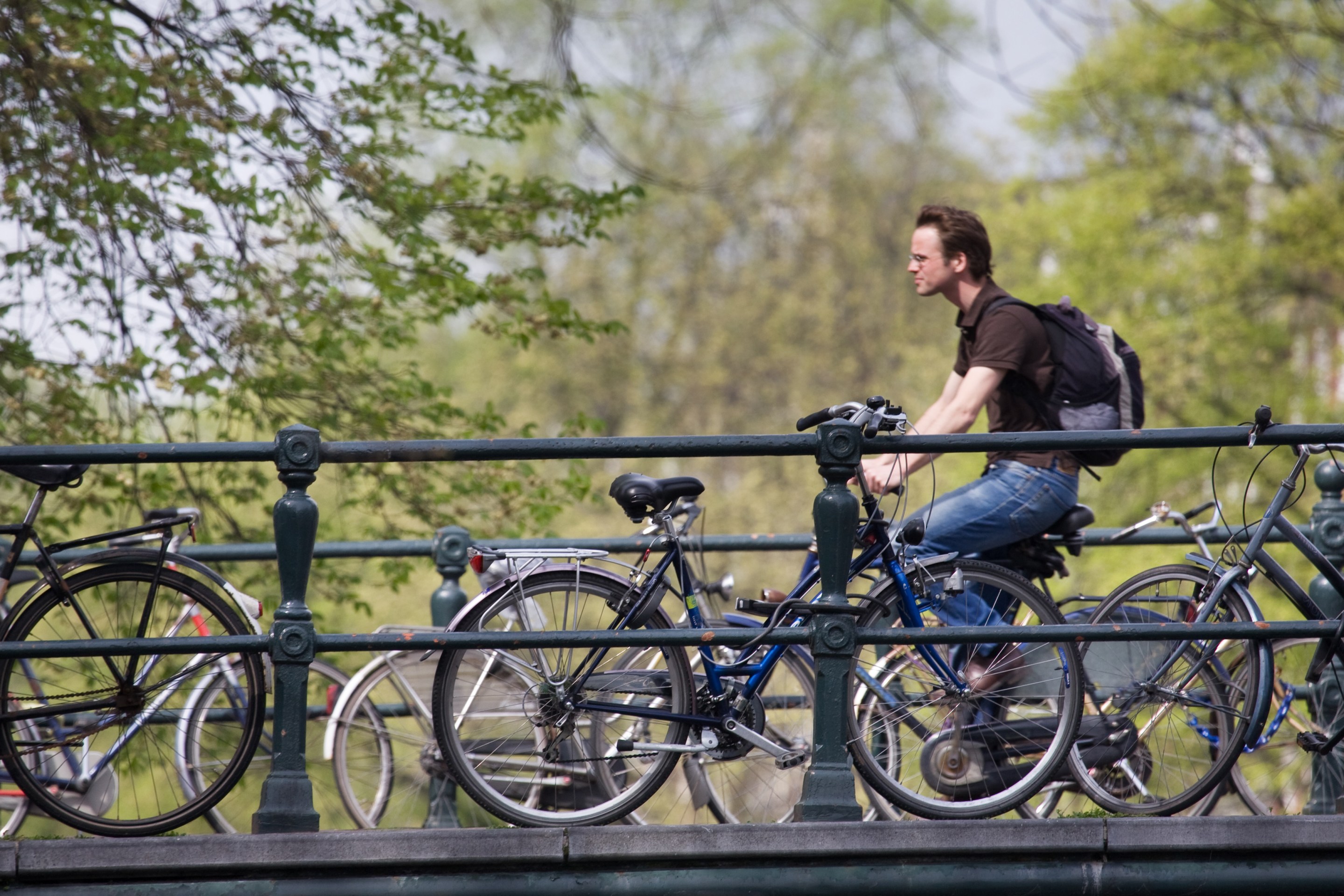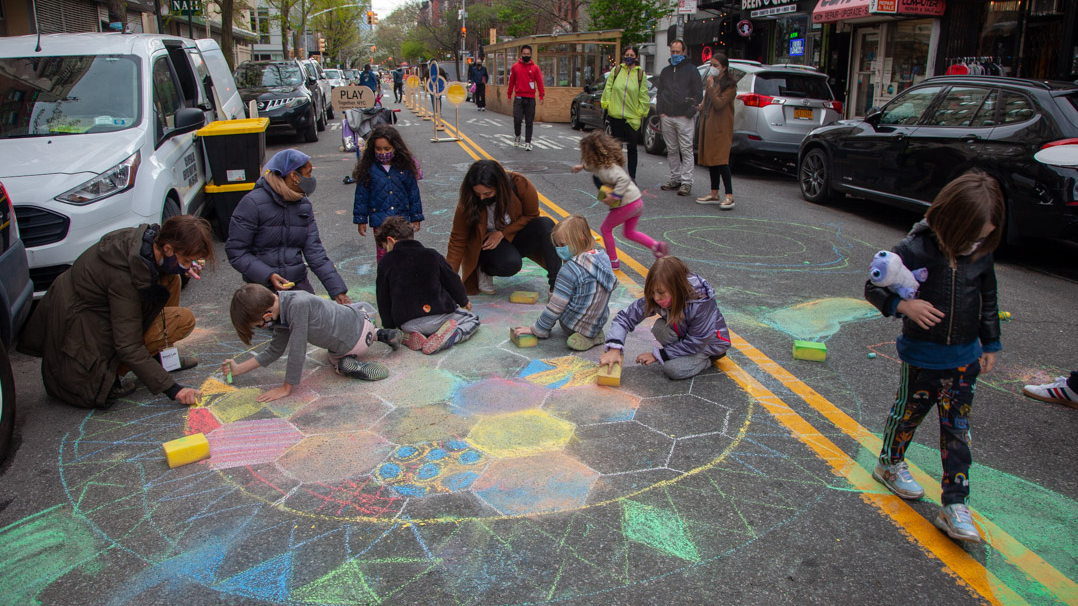
New York City’s nearly 1.1 million public-school students will start the new term on Sept. 13. And although earlier in the summer it may have seemed possible that the reopening could be something resembling “back to normal,” the easily transmissible Delta variant of COVID-19 now means that schools will be employing some, but not all, of the mitigation measures that were in force last year. They’re not enough.
Some parents are calling for a return of the remote-school option, but our children need in-person learning. As parents of public-school kids — Kelly’s children are in elementary grades, Ellen’s in middle school — as well as public-space professionals, we are appalled at Mayor de Blasio’s lack of courage and creativity when it comes to schools’ use of the outdoors.
At a minimum, every school should have a car-free street in front of its entrance, one that is closed to vehicular traffic and open for recreation, lunch, and learning.
We are nearly 18 months into the pandemic that struck New York City early and hard. Along with opening schools, the mayor wants reopened offices, full subways, and the thriving shops, restaurants, and small businesses that give a city life. But a healthy society is only as strong as its most vulnerable members. Students come in contact with and go home to the city’s nurses, doctors and respiratory techs, subway motormen and bus operators, and restaurant staff and delivery workers. When the virus starts to spread, schools will close, and kids will go into quarantine along with their parents, who will not be able to return to their workplaces. The city’s economic progress will stall.
It’s not too late to course-correct.
As governor, Andrew Cuomo closed all of New York’s restaurants on March 15, 2020. By May, they were starting to open for outdoor dining, albeit in a haphazard way. On June 22, the city’s Open Restaurants program was launched. That’s three months from closure to reopening in a relatively safe way. In other words, when the mayor is motivated, he can come up with solutions. That expansion into our city’s largest public space — our streets — was both innovative and successful, and now it’s time to apply the lessons learned there to our schools.
Taking our schools outdoors should not be a revolutionary idea, after our year-long dining experiment. Yet the city has been sluggish at best about moving schools into outdoor space, let alone streets. Yes, the departments of Transportation and Education joined forces to start an outdoor-learning program in 2020, but the process of applying for and maintaining it is onerous and prohibitive. Schools that participated last year have to reapply anew. Principals have discovered that they have to become amateur urban planners in order to complete the application and place managers to make use of the public space throughout the school year. The city is full of professionals with these talents; why are we asking our school administrators to add one more responsibility to their never-ending to-do lists?
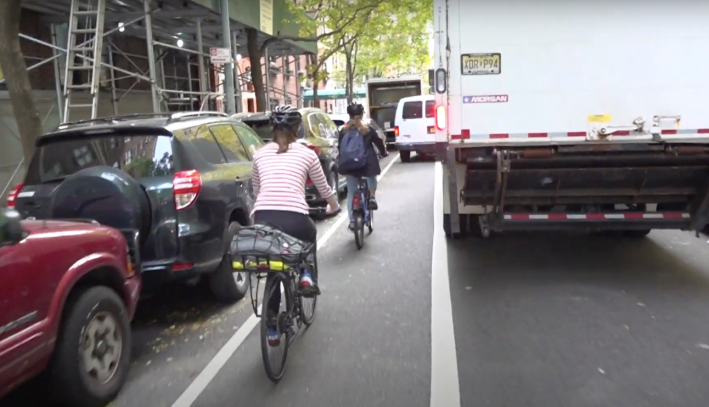
For more than a decade, our city has been returning its streets to people for walking and bicycling with the goal of creating a safer city for all. Much of that effort has been focused on moving people from one place to another, but now it is time to think even bigger and use our streets for connection, play, eating, and yes, learning. The best public spaces, including streets, welcome and accommodate all ages, from toddlers taking their first steps to senior citizens with decreased mobility. The streets surrounding our nearly 2,000 schools should be the first to reach this benchmark. Outdoor school spaces will deliver multiple benefits beyond COVID mitigation and improved physical and mental health: A 2018 study produced by Localize found that an alarming number of traffic crashes affecting pedestrians and bikers occur near schools, and curtailing traffic there inherently creates safer spaces for kids as they walk and bike near the buildings.
This public health issue is also about equity. A July 2021 Rand Corporation national survey on parents’ feelings about the return to school found that "about two-thirds or more of Black, Hispanic, and Asian parents needed each of the following practices in place to feel safe sending their children to school in person: ventilation in classrooms, teachers being vaccinated, social distancing, mandatory masking, and regular COVID-19 testing. Substantially fewer White parents needed these practices in place to feel safe. As in [an earlier survey in] May 2021, parents who were unsure about sending their children to school in person especially wanted all of these safety practices, and more." Without a remote learning option, using outdoor space is another way schools can keep students and staff safe, addressing parents’ desire for better ventilation and social distancing.
There are three days before schools re-open. Mayor de Blasio can use that time to come up with a plan and get the message out citywide, so that school staff don’t have to go door-to-door to explain to local businesses what’s happening (as the application now requires) at the last moment. The city’s planners should work with the DOE as well as individual schools to determine the best configurations of street space, and then supply a toolkit of equipment and procedures needed to run an open street.
Now is the time for Mayor de Blasio to prove that NYC really is as exceptional as we all believe it is. He needs to make street closures around schools his top priority to keep children safer from COVID, and he can do that by directing the DOT, DOE, the Department of City Planning and other city agencies to collaboratively support school administrators as they create these spaces. His second and final term ends in four months. His legacy leans heavily on the achievement of universal pre-K in his first year. Mayor de Blasio now has the opportunity to bookend that legacy with another major innovation for the city’s children and their families.
Ellen McDermott is the interim executive director of Project for Public Spaces, and the former co-deputy director of Transportation Alternatives. Kelly Verel is the director of the Market Cities program at Project for Public Spaces.
